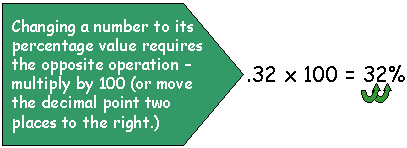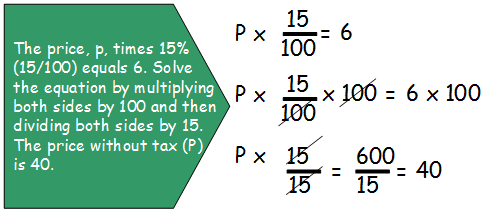What is a percentage?
Percent means “for every 100” or “out of 100.” The (%) symbol is a quick way to write a fraction with a denominator of 100. As an example, instead of saying “it rained 14 days out of every 100,” we say “it rained 14% of the time.”
Percentages can be written as decimals by moving the decimal point two places to the left:
Decimals can be written as a percentages by moving the decimal point two places to the right:
Formula for calculating percentages
The formula for calculating percentages or for converting from percentages are relatively simple.
To convert a fraction or decimal to a percentage, multiply by 100:
To convert a percentage to a fraction, divide by 100 and reduce the fraction (if possible):
Examples of percentage calculations
The following two examples show how to calculate percentages.
1) 12 people out of a total of 25 were female. What percentage were female?
2) The price of a $1.50 candy bar was to be increased by 20%. What was the new price?
3) The tax on an item is $6.00. The tax rate is 15%. What is the price without tax?
|
Handy Tip: A good way of finding percentages is to start by finding what 1% is. Example: What is 6% of 31? |
|
|
Find 1%. Divide by 100 (or move the decimal point two places to the left) |
31 ÷ 100 = .31 |
|
We now know what 1% is. We just need to multiply it by 6 to find 6% |
.31 x 6 = 1.86 |
|
6% of 31 is 1.86 |
|







